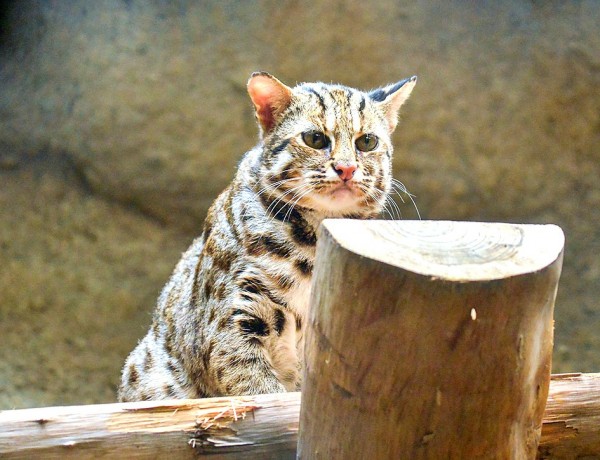《TAIPEI TIMES》 Taipei Zoo’s leopard cat to be moved for mating

A leopard cat is pictured in the Taiwanese animals section at Taipei Zoo in an undated photograph. Photo provided by the Taipei Zoo
FAMILY MATTER: Chi-pao is to be replaced in the Taipei Zoo by her aunt, Hsiao Mu, who is to be in quarantine for a month while the outdoor activity area is disinfected
By Tsai Ya-hua and Sherry Hsiao / Staff reporter, with staff writer
Chi-pao (集寶), a female leopard cat, is on Tuesday to return to the Council of Agriculture’s Endemic Species Research Institute (ESRI) in Nantou County for breeding, the Taipei Zoo said.
Chi Pao, who will turn five in March, was born in the institute and moved to the zoo’s indigenous animal area on June 23, 2014.
After a week of rest and adaptation, Chi Pao is to move to the institute’s leopard cat shelter to mate with a male named A-chung (阿中), the zoo said.
A-chung was transferred to the institute in January last year after being discovered in an animal trap by farmers in Nantou’s Jhongliao Township (中寮).
His front left leg had to be amputated to save his life, but he was unable to return to the wild, because his other front leg could not support him.
The shelters in which Chi Pao and A-chung are soon to live are connected by a small door in the middle, the zoo said, adding that conservationists can observe their interactions and open the door for them to visit at appropriate times.
If they are attracted to each other and are willing to occupy the same space, one of the shelters can be closed off for conservationists to more easily observe their interactions and determine whether they will mate, it added.
Chi Pao’s biological aunt, Hsiao Mu (小母), will take Chi Pao’s spot, the zoo said, adding that it would keep Hsiao Mu in its quarantine and rescue center for a month while it renovates and disinfects the outdoor activity area.
There are estimated to be less than 600 leopard cats in Taiwan, showing the urgent need for their protection, the zoo said.
In 2008, the leopard cat was listed as a grade-one endangered species in the council’s Schedule of Protected Species and it is protected under the Wildlife Conservation Act (野生動物保育法).
新聞來源:TAIPEI TIMES














